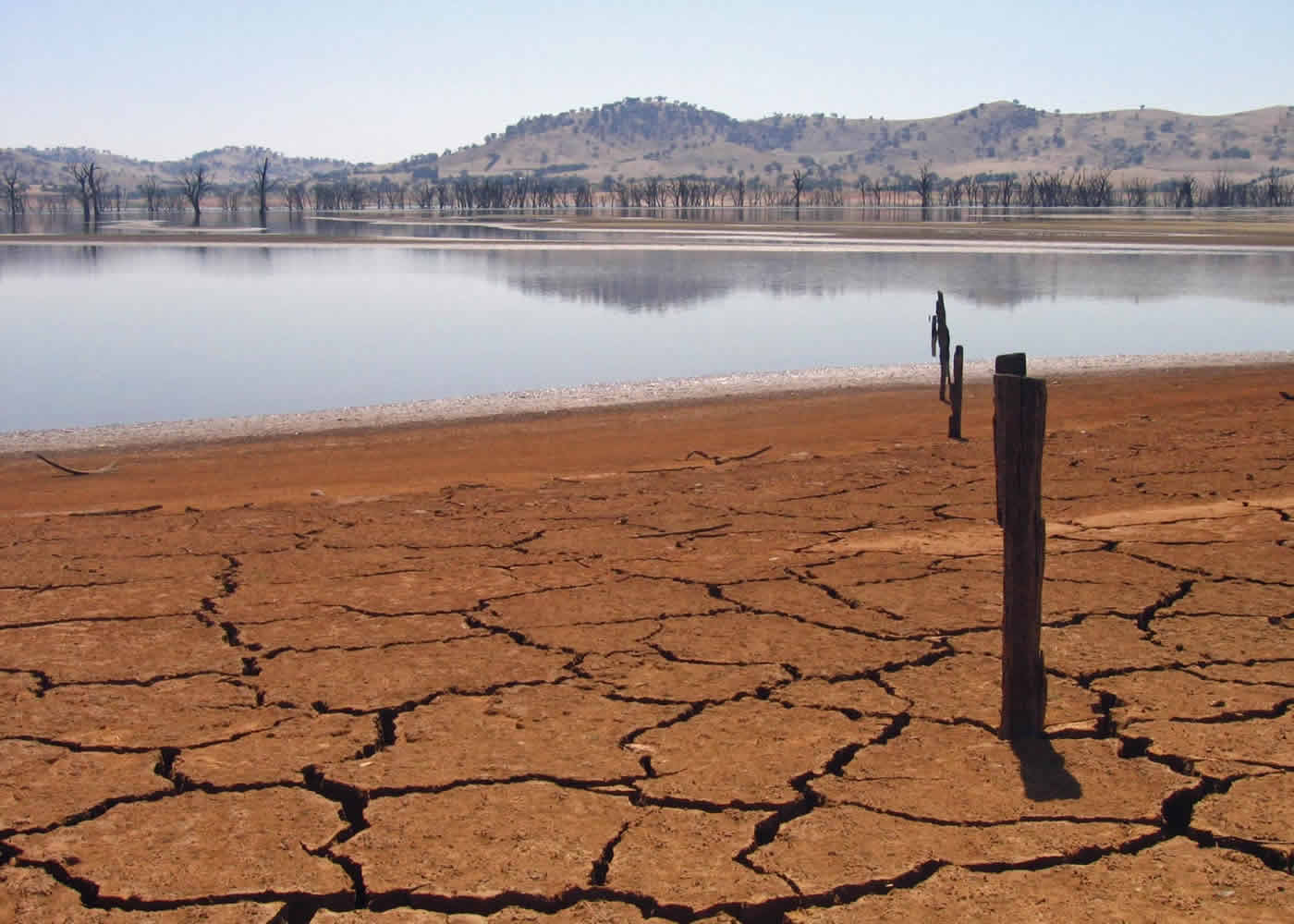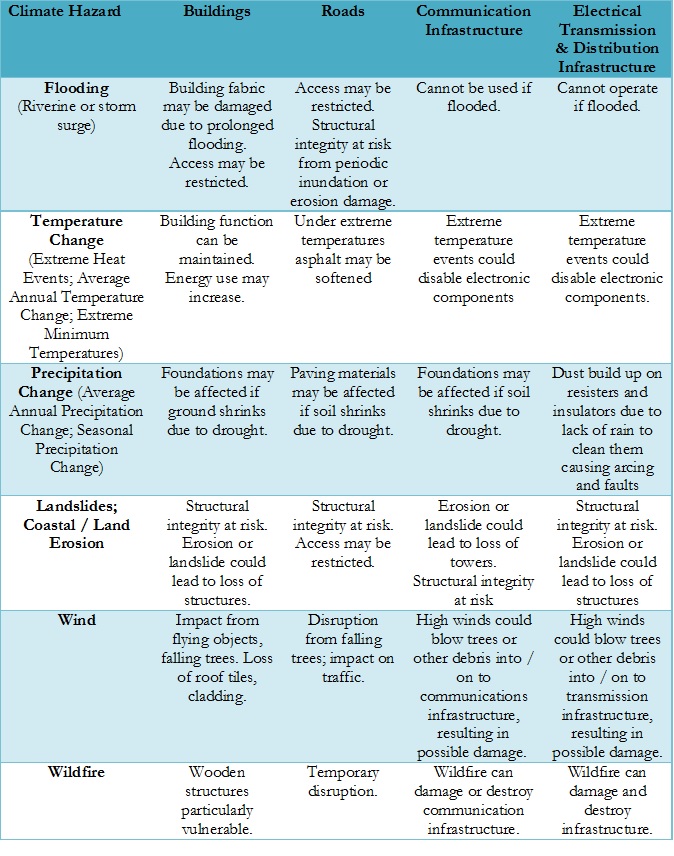Engaging your Enterprise and Taking Action on Climate Change

To begin the process of understanding the risks that changing climate poses to your business, you should consider conducting an initial assessment that identifies the likely impacts and the priority areas that warrant further detailed investigation. This analysis may involve:
- Identifying the services and critical assets that support them (e.g. buildings, facilities, equipment, products, roads, electricity, water and wastewater)
- Considering the climate hazards and trends for your region (e.g. changes in temperature, rainfall, flood, drought, sea level change and wind)
- Undertaking a high level assessment of impacts and potential implications
- Documenting results and identifying the priority issues for more detailed investigation or action
Table 1. Examples of Climate Impacts on Various built assets

*The information in this table is provided as an example and is not intended to be an exhaustive listing.
The screening process aims to identify the impacts that warrant further investigation because they are either of greatest concern or because little is known about the potential impacts that may have significant consequences should they occur (e.g. the vulnerabilities of critical elements of the supply chain or a change in quality or availability of intake water for a facility). The method by which the most significant or priority issues are determined can vary depending on the resources that are available.
A quick approach would involve key staff applying their knowledge and experience of assets, operations and how they have performed during historical natural hazard events. A more detailed approach would involve rating the vulnerability of assets. For each identified impact, this would consider the exposure and sensitivity of each asset as well as its ability to adapt or recover from an impact (i.e. adaptive capacity). A scoring system would be applied to these elements which would then be combined to determine an overall vulnerability ranking.
Managing natural hazards is often not a new concept for many organizations, which means that there are often many sources of information that an organization will typically have to inform this assessment including emergency management plans, asset management strategies and operational procedures. This information can be supported by external information sources including hazard mitigation plans developed by local or regional planning authorities.
To learn more about how to assess your climate risk and prepare your company for resiliency, join AECOM and NAEM for the upcoming webinar, Climate Adaptation and Resilience on April 23 at 1:00 p.m. EST.
Topics:
Sustainability
Related
About the Author
Allan Klindworth
Allan Klindworth is a Climate Adaptation Project Manager with AECOM. He has worked with private sector organizations and all levels of government to help them understand the risks presented by the changing climate and build their resilience through adaptation planning. Most recently, Allan has been assisting the Australian Department of Defence with a national climate risk and adaptation planning study assessing the risks of sea level rise, flooding, and erosion to assets around the country.
